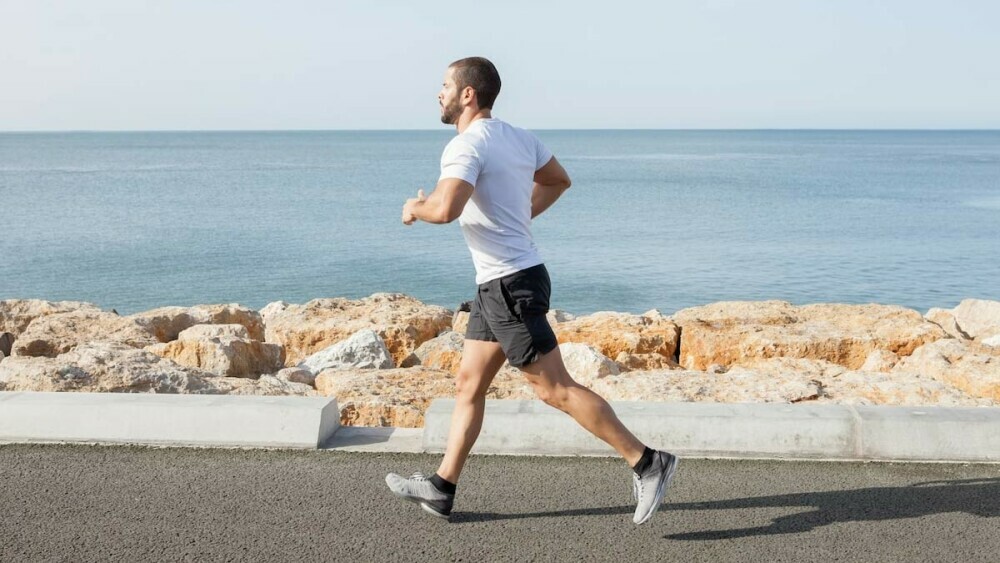BURN CALORIES IN LESS TIME
HIIT stands for High Intensity Interval Training. These are shorter workouts, beginning at 15 minutes in most cases. Periods of high energy are alternated with brief recovery periods.
We can burn larger amounts of calories in shorter periods of time, as compared to long cardio sessions. We can also boost our body’s capacity to use oxygen for energy.
Cameron Diaz has reduced her HIIT training to only 5 minutes. Check it out.
PUREGYM tells us that HIIT is so versatile that it can be applied to any of our most enjoyable exercise routines – walking, swimming, running or biking . Personally, I use it in conjunction with my treadmill workouts. Jumping jacks, boxing movements, lunges and squats would work.

FOR BEGINNERS
As is typically the case, beginners need to check with their primary care physicians when starting a new fitness routine, especially a challenging one. The intensity is demanding and exhaustion is not unlikely.
Warm up and cool down steps are important to prevent soreness or injury. Beginners should also limit HIIT to a couple of times per week. With real intensity, we will need the rest and recovery. And without real intensity, there is no reason to start. We need 90% or more of our maximum energy output.
Here is a recommended walking routine for beginners. A timing device – watch or phone – is necessary to measure the intervals.
- Walk at a slower pace for about 5 minutes
- Walk at a steady pace for 3 minutes
- Walk at a brisk pace for 1 minute
- Walk at maximum intensity for 1 minute, go all out.
- Repeat step 2-4 for as long as 15-20 minutes (total time)
- Finish with 3 minutes of slow walking to cool down

THE PRIMARY BENEFITS
Fat loss. A review by PubMed shows that both High Intensity Interval Training and Moderate Intensity Continuous Training elicited significant reductions in fat mass and waist circumference. HIIT, however, required 40% less time for the same results.
Metabolic rate is higher for hours afterward. Excess post-exercise oxygen consumption (EPOC or afterburn) is increased by HIIT more than by jogging or weight training.
Overall health. 50 different studies have shown, in summary, that HIIT reduces levels of blood sugar. For overweight or obese Individuals, a reduction in resting heart rate and blood pressure was seen.
Time efficiency. Many people are too busy to devote 2-3 hours to fitness routines. The Center for Disease Control tells us that lack of time is one of the main barriers to fitness. 20-30 minutes can be enough and Cameron Diaz does well with 5 minutes.
VIDEOS
Here is a 25 minute home HIIT workout, with a ratio of 40 seconds exercise to 10 seconds rest throughout. This routine is for moderate intensity only.
This routine is a 15 minute gentle HIIT, with a 30-30 ratio, though the instructor is demonstrating during his rest time
This one is for beginners but with real intensity. He does a 30-30 ratio, greater intensity than the two above.
This is an AARP routine, mother and daughter. 30-30. Light dumbbells are used. 10 minute routine. Mother stays seated.
Here is a lower body HIIT workout, 30 seconds, then 20 seconds rest. One minute rest after circuits are completed. 20 total minutes, not including warm-ups.
AMAZON
As a customer and associate of Amazon, I am able to enjoy their products and fast delivery service. I can also use their relevant links in my articles and benefit from sales from those links.
Each link will show product details, pictures, reviews, prices and other similar or complementary choices.
My Nordic Track treadmill. I use this at least 5 times per week before breakfast. It is very durable, with constant use. I do a form of HIIT by raising, then lowering the speed or incline.
Weighted jump rope. Ideal for HIIT.
Punching bag and boxing gloves. Great HIIT workout!
Heart rate monitor chest strap
FINAL THOUGHTS
For absolute beginners to HIIT, the most appropriate work-to-recovery ratio is 1 to 3. High intensity is required and this must be built up slowly and steadily. The duration of work and recovery phases will later depend on fitness levels and training goals.
My Zone gives us the following suggested ratios for our first 4 weeks of training:
- Week 1 – 15 seconds work, 45 seconds recovery
- Week 2 – 20 seconds work, 60 seconds recovery
- Week 3 – 30 seconds work, 90 seconds recovery
- Week 4 – 30 seconds work, 90 seconds recovery
This increases slowly until we are in week 20, when we do 90 seconds work, 30 seconds recovery
HIIT demands high energy, so work up to this. We save time with HIIT, but we need to be ready for it.
Group classes work well, as do dumbbells. HIIT can apply to just about any form of exercise.

Please leave me any comments or questions in the “Comments” section below. Or email me, richard@myworkoutathome.com.
Let’s stay active!